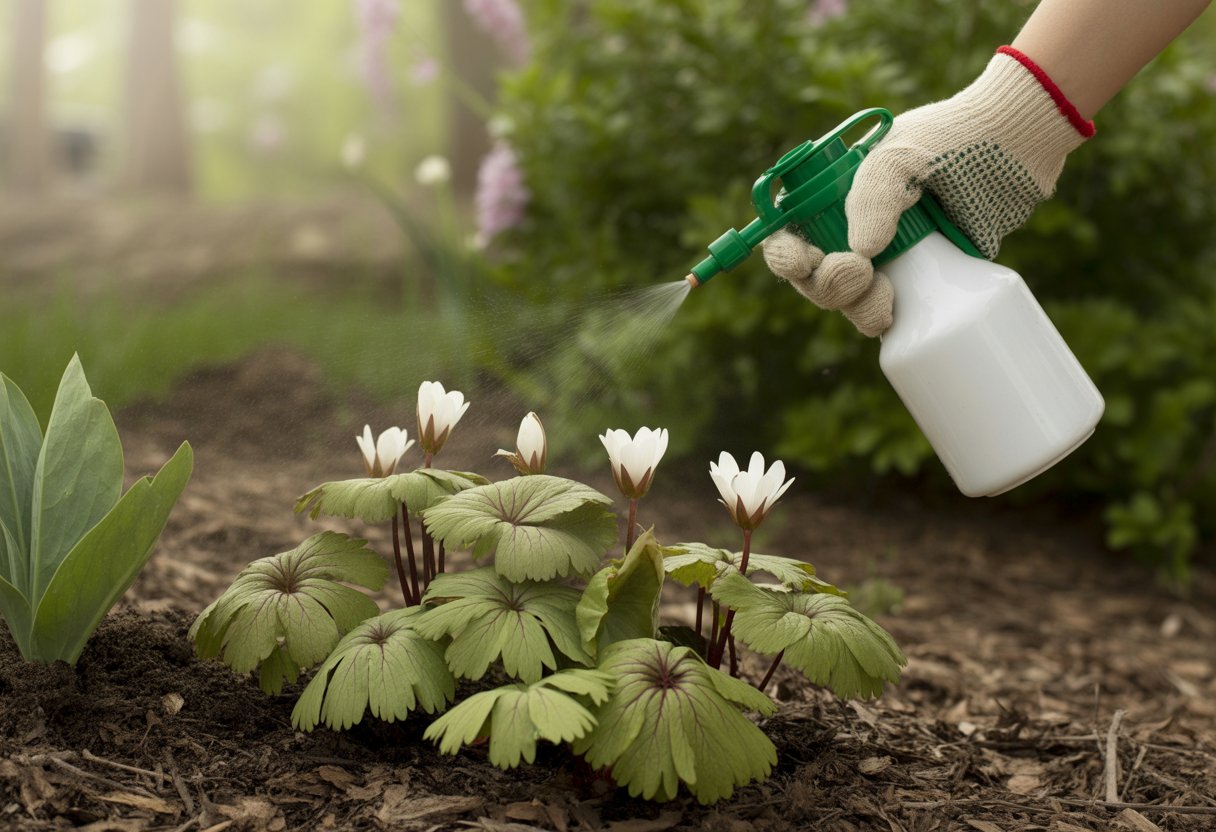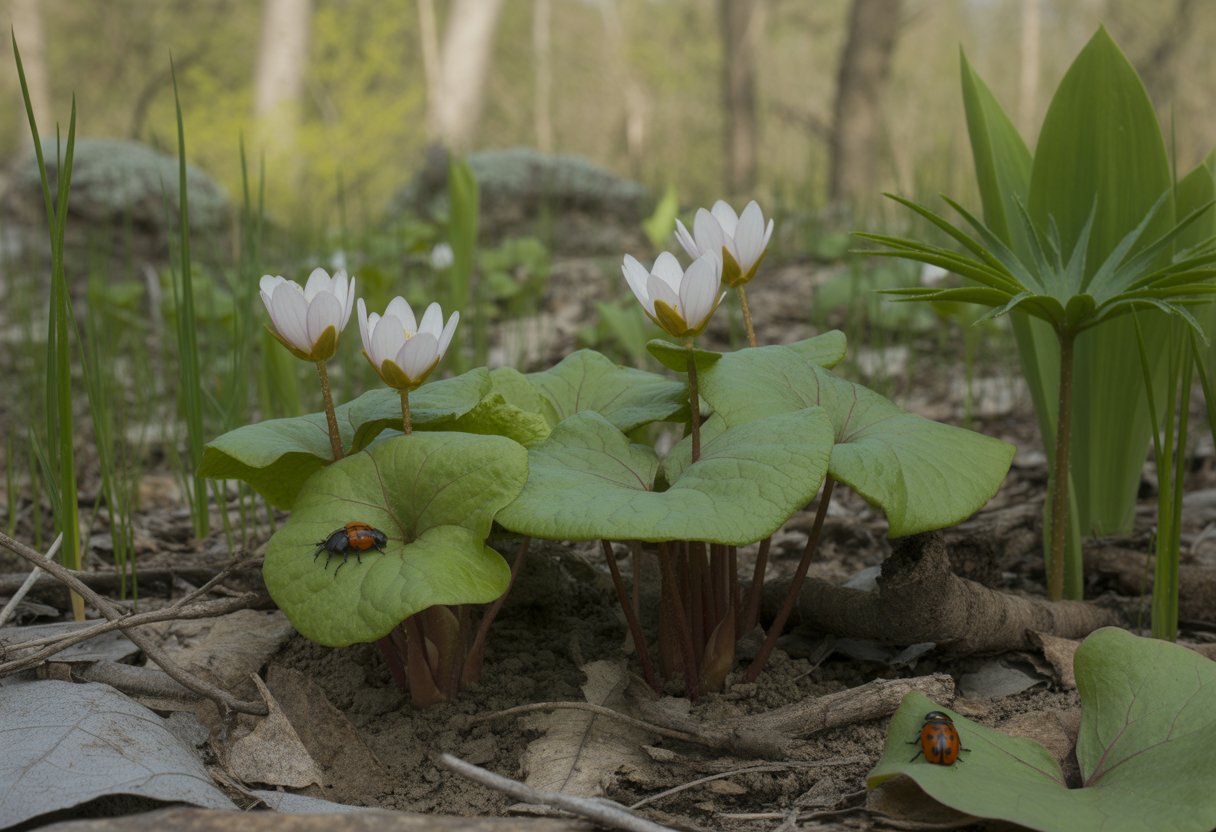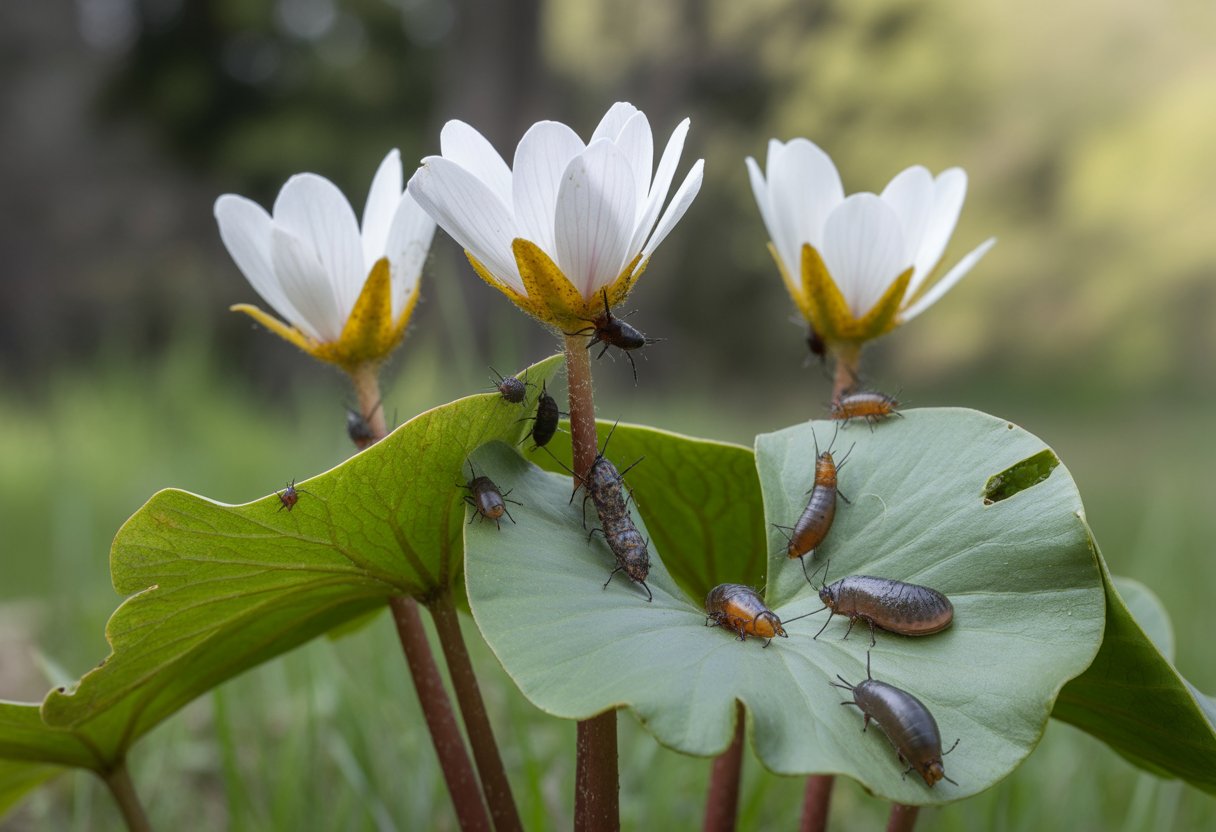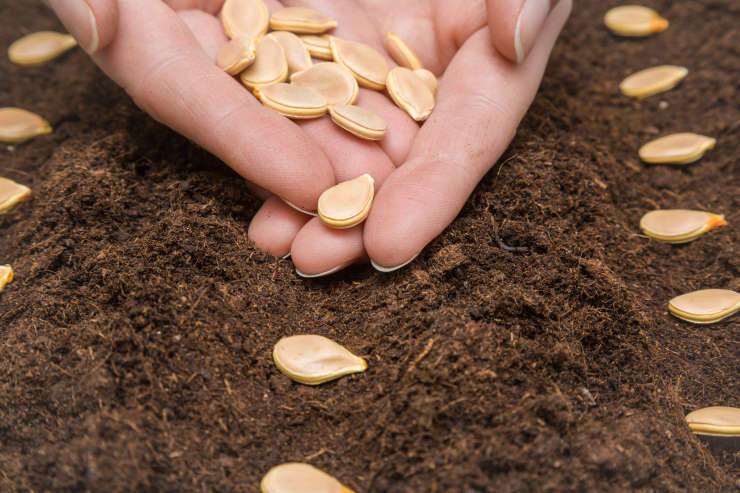Organic Pest Control for Bloodroot Effective Strategies to Protect Your Plants Naturally
Bloodroot’s a native perennial, famous for its white flowers and medicinal uses, but it’s not immune to garden pests. Plenty of gardeners prefer to skip harsh chemicals and look for safer ways to protect these plants.
Organic pest control for bloodroot means using natural methods like introducing beneficial insects, applying neem oil, or just keeping the garden tidy.

Slugs, aphids, and caterpillars show up most often to bother bloodroot. Barriers, hand-picking, and inviting predator insects can really cut down on the damage.
These approaches skip synthetic chemicals, so they’re less risky for bloodroot and the good bugs you want around.
Understanding Bloodroot and Its Growing Environment

Bloodroot thrives in pretty specific spots, and those conditions affect how it grows and what pests bother it. If you get a sense of where bloodroot fits in the wild and what it likes, you’ll have an easier time growing it and keeping pests away.
Bloodroot in Native Ecosystems
Bloodroot (Sanguinaria canadensis) grows wild in deciduous woodlands across the Midwest and Northeast United States. You’ll usually spot it under hardwoods, popping up early in spring before the trees leaf out.
It hangs out with a whole crew of native plants, from trillium to spring wildflowers. Bloodroot’s sap has alkaloids that fend off some critters, but slugs, aphids, and beetles still find their way in.
As a spring ephemeroid, bloodroot gets most of its growing done before the forest canopy closes. Pollinators love it during those chilly early weeks.
Optimal Conditions for Bloodroot
Bloodroot likes rich, well-drained soil with loads of organic matter, just like you’d find in an old forest. It wants partial shade—not deep darkness, but definitely not baking sun all day.
Soil pH should be a little acidic to neutral, somewhere between 6.0 and 7.0. Bloodroot pops up in cool spring, usually March to May, and then fades back by early summer.
Keep the soil moist, especially in spring, but don’t drown the roots. Early frosts can be tough, so some protection helps. Good air flow cuts down on fungal issues, but too much wind dries it out.
A layer of leaf litter mulch keeps things feeling natural and holds moisture.
Common Companion Plants
Bloodroot gets along with other native understory plants. Trillium, coral bells (Heuchera), iris, and wild strawberries all make good neighbors.
In a perennial garden, you can pair bloodroot with liatris or small deciduous shrubs for a bit of contrast and longer-lasting blooms. Shade-tolerant, rich-soil-loving companions attract helpful insects and sometimes distract pests.
It helps to pick plants with roots that won’t fight for space. Aggressive or invasive species can crowd out bloodroot’s shallow rhizomes, so skip those.
A mixed native plant patch keeps pests in check and the soil healthy.
Organic Pest Threats to Bloodroot

Bloodroot has to deal with certain pests and diseases that really mess with its growth. Birds play a part too, mostly in spreading seeds.
Insect Pests: Aphids, Slugs, and Snails
Aphids—tiny, sap-sucking bugs—cluster on bloodroot’s young stems and leaves. They make leaves curl and steal nutrients, leaving the plant weaker.
Slugs and snails chew holes in the foliage, especially when it’s damp. They hide out during the day and come out at night.
You can pick slugs and snails off by hand or use barriers like crushed eggshells or diatomaceous earth. Ladybugs eat aphids, so bringing them in helps without any chemicals.
Dealing With Japanese Beetles
Japanese beetles chew up bloodroot leaves, leaving them looking like lace. If there’s a lot of them, the plant can’t photosynthesize well.
Traps work, but you’ll want to set them away from your bloodroot so you don’t draw more beetles in. Hand-picking in the early morning or evening is surprisingly effective.
Neem oil spray messes with beetle feeding and reproduction. Keep an eye out from late June to August, since that’s when beetles show up most.
Recognizing Disease Symptoms
Fungal diseases like powdery mildew or rust leave white patches or orange/yellow spots on bloodroot leaves.
If you see wilting or drooping, it could be root rot from soggy soil. Leaf blotches are often a sign of bacterial or fungal leaf spots.
Spot problems early and remove any affected leaves. Good air flow and skipping overhead watering help keep fungal issues in check.
Birds and Seed Dispersal
Birds help bloodroot spread by eating its red seeds and dropping them elsewhere. That’s great for the plant’s future and for keeping populations healthy.
They don’t really hurt the plant, but sometimes they move pests or fungi around. Keeping bloodroot healthy makes it less of a target.
Dense ground cover encourages birds to drop seeds in good spots, which means more bloodroot popping up next season.
Best Practices for Organic Pest Control
Managing pests on bloodroot really comes down to setting up the right environment. A mix of plant companions, barriers, and smart gardening habits can go a long way.
Cultural Techniques to Reduce Pest Damage
Healthy soil loaded with compost or mulch gives bloodroot a fighting chance. Mulch holds in moisture and stops weeds, which can attract pests.
Partial shade under trees like pine, spruce, hemlock, or yew mimics bloodroot’s natural home. Good air flow keeps leaves dry and less inviting to pests and disease.
Water regularly, but don’t overdo it—soggy roots spell trouble. Remove damaged or diseased leaves fast to stop pests from multiplying.
Natural Barriers and Companions
Put bloodroot near shrubs or perennials that repel bugs, or use strong-smelling herbs to attract helpful insects.
Physical barriers like fine mesh or row covers keep bigger pests out. Pine or spruce needle mulch can also keep slugs and snails away.
Adding plant diversity nearby brings in more beneficial insects. Matching bloodroot with local native plants helps keep the whole area balanced and less pest-prone.
Soil Health, Fertilization, and Disease Management
Soil health makes all the difference for bloodroot’s growth and its ability to resist pests or disease. Getting the right nutrient balance and managing fungal threats keeps plants strong without chemicals.
Balancing Nutrient Levels With Organic Amendments
Bloodroot loves soil rich in organic matter and balanced nutrients. Compost works well, slowly releasing nitrogen, phosphorus, and potassium while making the soil hold water better.
Micronutrients like iron and copper matter too, and you can add those with things like greensand or kelp meal. If your soil needs to be a little more acidic, sulfur from elemental sulfur or composted stuff can help.
Test your soil now and then to see what’s missing. Too much nitrogen makes leaves grow like crazy but doesn’t help roots or flowers.
A balanced approach encourages healthy growth and keeps pests from getting out of control.
Safe Use of Natural Fungicides
Bloodroot often struggles with fungal diseases like leaf spot and root rot, especially when things get soggy. Copper-based sprays, like Bordeaux mixture, can help, but it’s best to go easy—too much copper isn’t great for the soil.
Neem oil and sulfur sprays work well for general disease prevention. They don’t mess with the good microbes, which is a relief. Just stick to the manufacturer’s directions for when and how much to apply, or you risk stressing the plants out.
Letting air move freely around your bloodroot helps a lot. Try not to water from above, and if you spot infected leaves or stems, get rid of them fast. That way, you won’t have to lean so hard on fungicides.


